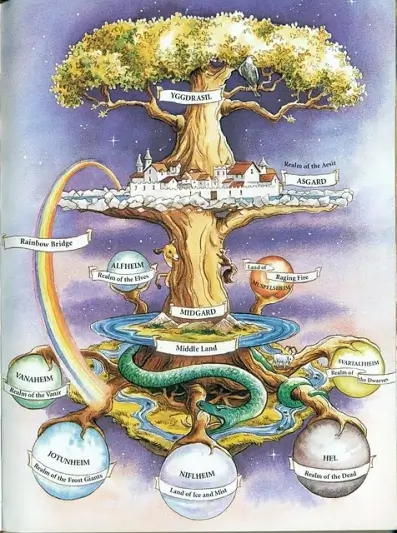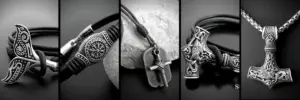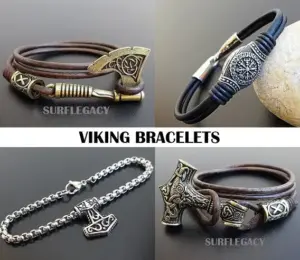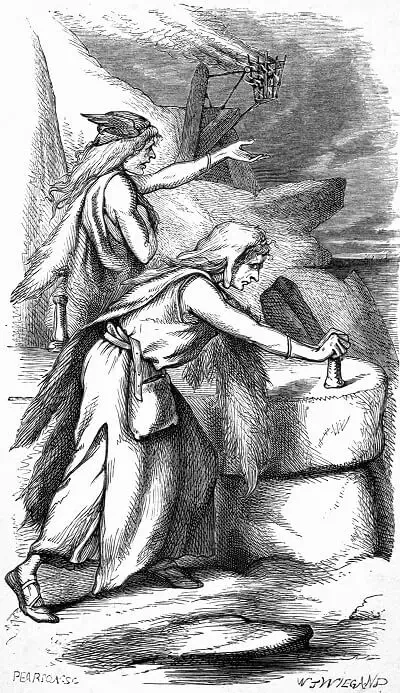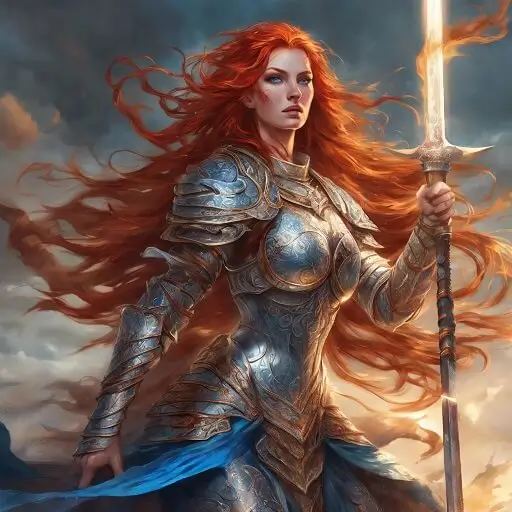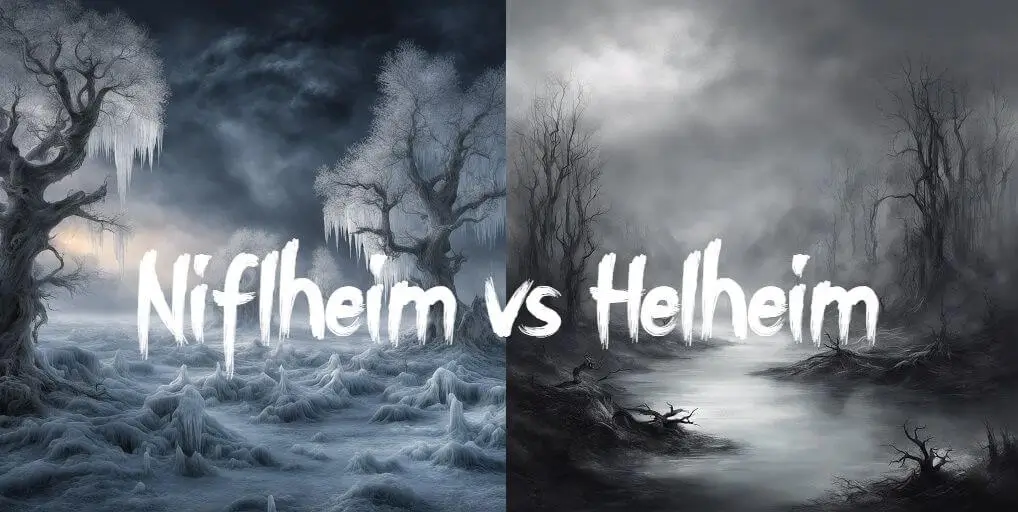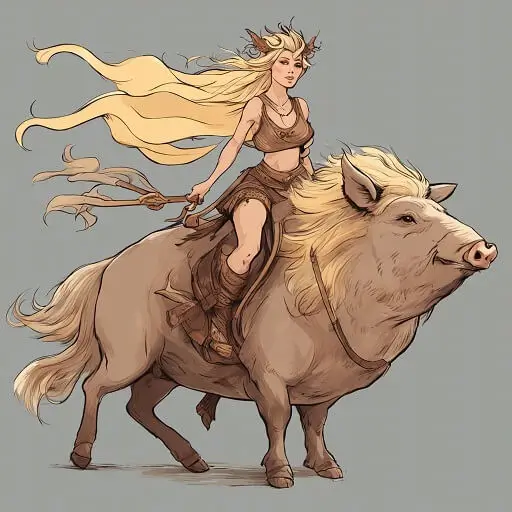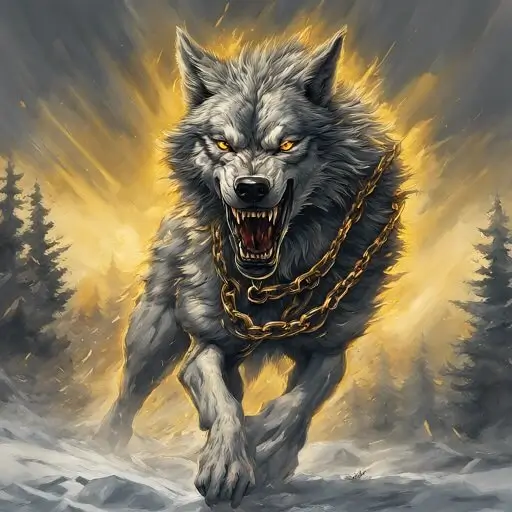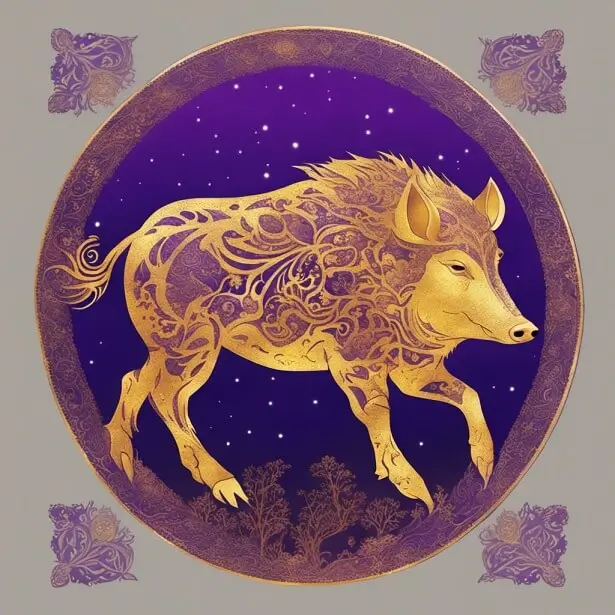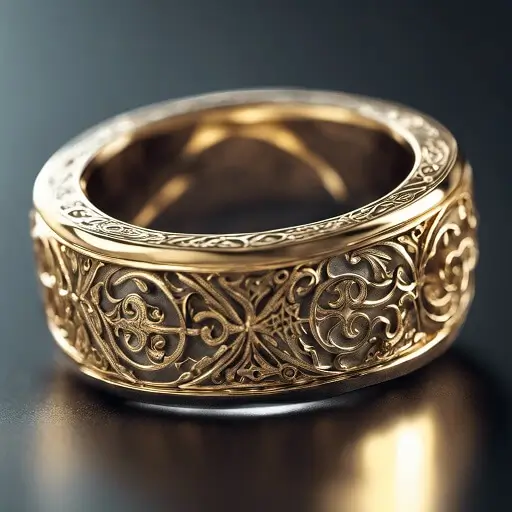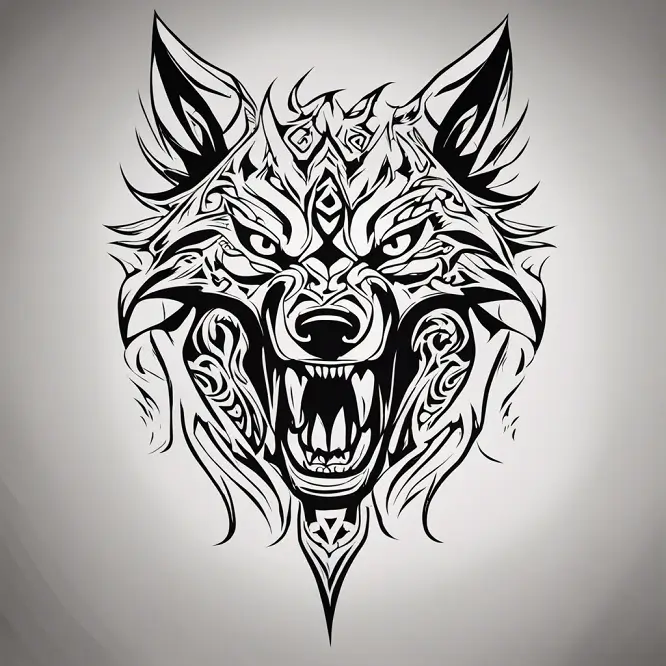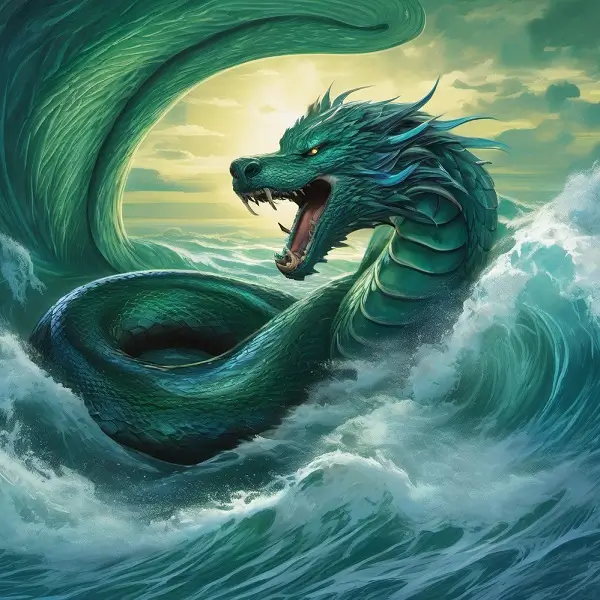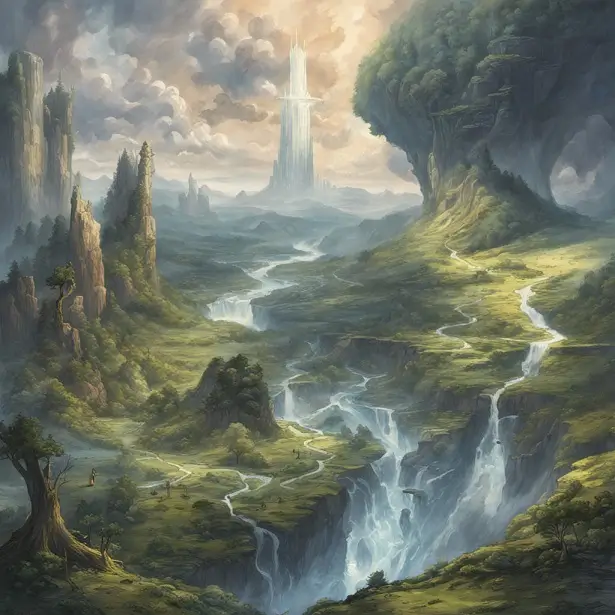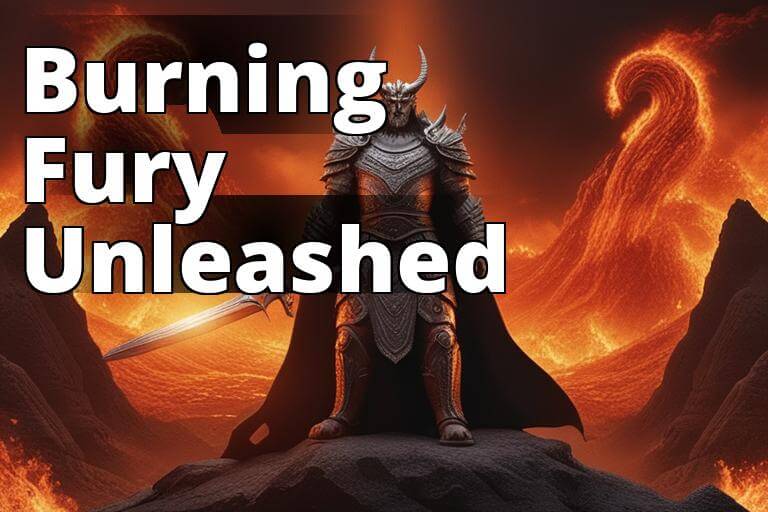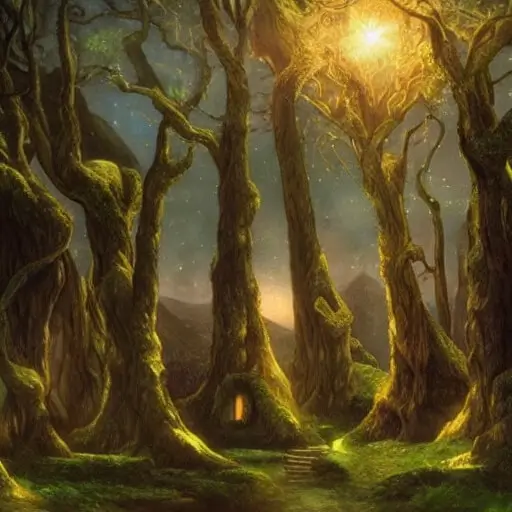Vanaheimr, one of the Nine Realms in Norse mythology, holds a place of intrigue and importance within the ancient Norse cosmos.
In this blog post, we delve into the mysteries of Vanaheimr, exploring its origins, inhabitants, and its significance in Norse mythology.
From the enigmatic Vanir deities to the realm’s connection with nature and magic, join us on a journey to uncover the secrets of this captivating realm within the Norse mythological tapestry.
Key Takeaways
- Vanaheimr was the mythical home realm of the Vanir gods and goddesses in Norse mythology. It represented concepts like fertility, nature, magic and prosperity.
- The precise location of Vanaheimr is ambiguous – theories place it near Hel, between Asgard and Midgard, or among the branches of Yggdrasil.
- Vanaheimr is described as a lush, fertile realm with rolling hills, forests, rivers and a temperate climate.
- Major Vanir gods included Njord, Freyr, Freyja, while minor deities like Hœnir also inhabited Vanaheimr.
- The Vanir had a strong tie to magic and sorcery. They used seidr to commune with spirits, heal the land, and maintain balance.
- Vanaheimr is scarcely mentioned in ancient Eddas but had a vital role in Norse cosmology and theology.
Origins and Description of Vanaheimr
Meaning and Etymology
Vanaheimr, deriving from Old Norse, combines “Vana” and “heimr.” “Vana” refers to the gods associated with fertility, prosperity, and nature, while “heimr” translates to “home” or “realm.” Thus, Vanaheimr can be understood as the “home of the Vanir” or the “realm of the Vanir gods.”
Vanaheimr’s geographical location and relation to other realms
Vanaheimr is among the Nine Realms of Norse mythology, known as one of the homelands of the gods. While the precise location of Vanaheimr is not explicitly stated in ancient texts, it is described as a distinct realm within Norse cosmology.
In relation to other realms, it shares a close connection with Asgard, the realm of the Æsir gods. The Vanir and the Æsir are distinct groups of deities, and Vanaheimr’s relationship with Asgard has been influenced by both cooperation and conflict.
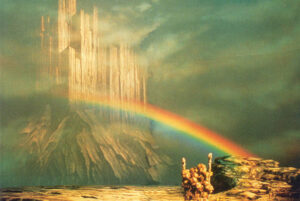
Asgard
Descriptions of the landscape, climate, and natural features
Vanaheimr is often depicted as a fertile realm, abundant with vibrant flora and natural resources. It showcases rolling hills, meandering rivers, and vast meadows, forming picturesque landscapes. Enchanting forests grace the realm, housing ancient trees and providing solace for magical creatures.
Vanaheimr experiences a temperate climate, with mild summers and cool winters. The land basks in warm sunlight, nurturing crop growth and contributing to its overall fertility. This environment aligns with the Vanir’s association with agriculture and nature.
The realm features stunning lakes and rivers, often intertwined with mythological tales and divine significance. These bodies of water serve as sources of sustenance, trade, and even portals to other realms. Vanaheimr’s diverse landscapes, flourishing vegetation, and picturesque waterways contribute to its unique charm and allure.
The Vanir: Gods and Goddesses of Vanaheimr
Introduction to the Vanir, the deities associated with Vanaheimr
The Vanir, a group of gods and goddesses, are intimately connected to Vanaheimr, their realm of origin. Revered for their association with fertility, prosperity, and nature, the Vanir deities bring a distinct energy to Norse mythology. While they may not be as prominent as their Æsir counterparts, the Vanir play a significant role in the pantheon.
Descriptions and roles of the major Vanir gods and goddesses
- Njord: The god of the sea, wealth, and fertility
Njord stands as one of the principal Vanir gods, embodying the power and mystery of the sea. He is often depicted as a wise and benevolent deity, overseeing seafaring, fishing, and wealth. Njord’s association with fertility extends beyond the sea to encompass bountiful harvests and prosperous marriages.
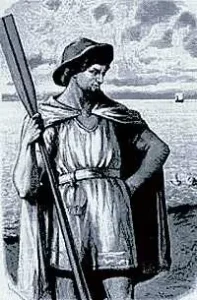
Njord God of Sea
- Freyja: The goddess of love, beauty, and fertility
Freyja, a prominent Vanir goddess, exudes beauty, passion, and sensuality. Known for her enchanting allure, she governs matters of love, desire, and fertility. Freyja’s influence reaches beyond romance, as she possesses great magical prowess and presides over the realm of death, guiding fallen warriors to the afterlife.
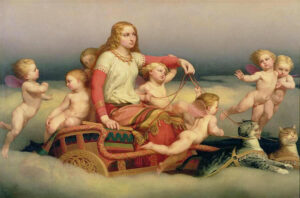
Freyja
- Freyr: The god of peace, prosperity, and agriculture
Freyr, the twin brother of Freyja, personifies peace, abundance, and the cycle of life. As a Vanir deity, he symbolizes the fertility of the earth, ruling over agriculture, harvests, and prosperity. Freyr’s role as a bringer of peace is reflected in his association with diplomacy and the settling of conflicts.
Table Summary of Major Vanir Gods
| Vanir God/Goddess | Domains | Significance |
|---|---|---|
| Njord | Sea, seafaring, fishing, wealth, agriculture | Major Vanir god, created in Vanaheimr |
| Freyr | Prosperity, peace, fertility, agriculture | Twin of Freyja, bringer of abundance |
| Freyja | Love, beauty, death, magic | Prominent goddess, seidr sorcery expert |
| Hœnir | Magic, transformation | Minor god, sorcerer |
Lesser-known Vanir deities
In addition to the major Vanir gods and goddesses, there are several lesser-known deities who contribute to the rich tapestry of Vanaheimr.
These lesser-known Vanir deities may include Forseti, the god of justice and reconciliation, and Gullveig, a figure associated with magic and transformation. While their stories and roles may be less prominent, they hold significance within Vanaheimr’s mythology and cultural practices.
These Vanir deities, both the well-known and lesser-known, shape the narrative of Vanaheimr, influencing its natural forces, fertility, and the cultural practices of its inhabitants.
Their tales and interactions with other realms reveal a deeper understanding of Vanaheimr’s place within the Norse mythological cosmos.
The Vanir in Norse Mythology
The Vanir and their relationship with the Æsir
The Vanir and the Æsir, two distinct groups of Norse deities, share a complex and evolving relationship. The Vanir, associated with Vanaheimr, and the Æsir, connected to Asgard, represent different aspects of the divine pantheon. While the Vanir embody fertility, nature, and prosperity, the Æsir embody strength, war, and wisdom. Despite their differences, both groups are integral to the Norse mythological framework.
The Vanir-Æsir War and its impact on Vanaheimr and the Nine Realms
The Vanir-Æsir War, a pivotal event in Norse mythology, had significant consequences for Vanaheimr and the Nine Realms. The war erupted due to perceived slights and power struggles between the Vanir and the Æsir. The conflict unleashed chaos and devastation across the realms, disrupting the balance of cosmic forces.
Reconciliation between the Vanir and the Æsir: The exchange of hostages and creation of peace
After a protracted and brutal conflict, the Vanir and the Æsir realized the need for reconciliation to restore harmony to the Nine Realms. As a gesture of peace, they agreed to exchange hostages, with the Vanir sending prominent figures like Njord and Freyr to Asgard, while the Æsir sent their own representatives to Vanaheimr.
This exchange of hostages fostered understanding and mutual respect between the two factions. It laid the foundation for a lasting peace, with the Vanir and the Æsir collaborating in various realms, sharing wisdom, knowledge, and cultural practices.
This reconciliation between the Vanir and the Æsir not only brought stability to Vanaheimr but also had far-reaching implications for the entire Norse mythological cosmos. The exchange of hostages symbolized the merging of the two divine groups, leading to a more unified pantheon and a shared destiny among the gods.
Vanaheimr’s Connection to Nature and Magic
Vanaheimr as a realm of fertility and abundance
Vanaheimr, known as the realm of the Vanir gods, is deeply intertwined with the concepts of fertility and abundance. It is often depicted as a land of lush vegetation, thriving crops, and flourishing wildlife. The realm’s natural beauty and bountiful resources exemplify the Vanir’s close association with the cycles of life, growth, and renewal.
Vanir’s association with nature, agriculture, and the elements
The Vanir gods and goddesses have a strong affinity for nature, agriculture, and the elements. They are revered as patrons of fertility, overseeing the fertility of the land, the growth of crops, and the well-being of animals. Through their divine influence, they ensure the abundance and prosperity of Vanaheimr and its inhabitants.
The Vanir also possess a deep connection to the elements. They have an innate understanding of the forces of nature, harnessing the powers of earth, water, air, and fire. This connection enables them to manipulate and shape the natural world, channeling their energies to bring harmony and balance to Vanaheimr.
Magic and seidr in Vanaheimr: The Vanir’s mastery of these arts
Magic, particularly seidr, holds a significant place in Vanaheimr and the Vanir’s mythology. Seidr is a form of Norse magic associated with shamanic practices, prophecy, and the manipulation of energies. The Vanir, with their deep connection to the natural world, have mastered the art of seidr, utilizing it to commune with spirits, divine the future, and bring about desired outcomes.
Seidr allows the Vanir to tap into the hidden realms of existence, bridging the gap between the mortal and divine realms. They can traverse the vast expanse of the cosmic tree, Yggdrasil, and interact with other realms, gaining wisdom and knowledge from the divine realms beyond Vanaheimr.
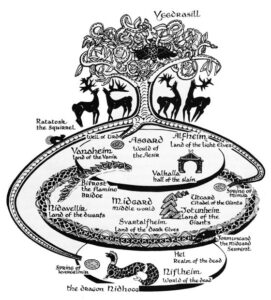
The Vanir’s mastery of magic and seidr is not only a source of power but also a means of preserving the delicate balance of nature. Through their magical abilities, they can heal the land, restore life, and maintain the harmonious relationship between Vanaheimr and the natural forces that sustain it.
In Vanaheimr, the close connection between nature, fertility, and magic is an integral part of the realm’s identity. The Vanir’s deep understanding of these intertwined elements reinforces their role as guardians of the natural world and custodians of the mystic arts.
Vanaheimr’s Inhabitants and Culture
Vanir beings beyond the gods and goddesses
Vanaheimr is home to a diverse array of beings beyond the Vanir gods and goddesses. These include various nature spirits, such as the landvaettir (land spirits) and skogsrå (forest spirits). These beings, often unseen by human eyes, inhabit the forests, rivers, and mountains of Vanaheimr, embodying the essence of the natural world. They play a vital role in maintaining the balance and vitality of the realm.
The Vanir’s relationship with humans and other creatures
The Vanir gods and goddesses have a unique relationship with humans and other creatures in Vanaheimr. They are often depicted as benevolent and protective deities, guiding and nurturing the mortal inhabitants of the realm.
The Vanir’s association with fertility and agriculture extends to the human realm, as they bestow blessings and abundance upon the human population. They foster a harmonious coexistence between humans and nature, emphasizing the interconnectedness of all living beings.
In addition to humans, the realm is populated by various mythical creatures and animals. These include the majestic unicorns, wise and mystical forest dwellers, and enchanting water spirits. These creatures contribute to the rich tapestry of Vanaheimr’s ecosystem, adding to its enchantment and wonder.
Cultural aspects of Vanaheimr, including traditions, celebrations, and beliefs
Vanaheimr has a vibrant and distinct culture shaped by the Vanir and their influence on the realm. The inhabitants celebrate and honor the cycles of nature, paying homage to the changing seasons, the fertility of the land, and the interconnectedness of all living things.
Traditions and rituals are an integral part of Vanaheimr’s cultural fabric. These may include sacred ceremonies to honor the Vanir, offerings of gratitude to the landvaettir, and communal celebrations marking important milestones, such as harvest festivals and solstice gatherings. These practices strengthen the bond between the inhabitants and their divine patrons, fostering a sense of unity and shared purpose.
Beliefs in Vanaheimr often revolve around the intrinsic value of nature and the importance of living in harmony with the natural world. The Vanir’s teachings emphasize respect for the land, sustainable practices, and the preservation of the delicate balance between humans and the environment. This ecological consciousness permeates the cultural ethos of Vanaheimr, influencing the daily lives and choices of its inhabitants.
In Vanaheimr, the interplay between the Vanir, humans, mythical creatures, and cultural practices creates a vibrant and harmonious community deeply rooted in nature and guided by a shared reverence for the divine forces that shape the realm.
Vanaheimr in Norse Sagas and Eddas
References to Vanaheimr in ancient Norse texts and sagas
Within the ancient Norse texts and sagas, Vanaheimr is mentioned sparingly. It is referred to in a single stanza of the Poetic Edda’s Vafþrúðnismál.
In this poem, Gagnráðr, disguised as Odin, engages in a contest of knowledge with the jötunn Vafþrúðnir. Gagnráðr questions the origin of the Vanir god Njörðr, who, despite ruling over many hofs and hörgrs, did not come from the Æsir.
Vafþrúðnir reveals that Njörðr was created in Vanaheimr by “wise powers” and mentions his role as a hostage during the Æsir-Vanir War. It is also foretold that Njörðr will return to the “wise Vanir” during Ragnarök, the world’s end.
Stanza 39
“In the home of the Wanes | did the wise ones create him,
And gave him as pledge to the gods;
At the fall of the world | shall he fare once more
Home to the Wanes so wise.”
Stories and myths involving the Vanir and Vanaheimr
The Prose Edda’s Gylfaginning provides further insights into the Vanir and Vanaheimr. It states that Njörðr was raised in Vanaheimr but sent as a hostage to the Æsir.
This indicates the complex relationship between the two groups of gods. The Heimskringla’s Ynglinga saga, which offers a mythological history, mentions “Van Home” as the home of the Vanir, located around the Don River (formerly known as “Tana Fork” or “Vana Fork”).
It describes the Æsir-Vanir War and the exchange of hostages, including the god Hœnir being sent to Vanaheimr, where he became a chieftain. The saga also recounts the story of King Sveigðir, who married a woman named Vana in “Vanaland,” located in Sweden, and their son, Vanlandi.
Vanaheimr’s influence on other realms and its interactions with them
Vanaheimr’s influence extends beyond its borders, interacting with other realms, particularly Asgard, the realm of the Æsir. The Æsir-Vanir War, marked by conflict and eventual reconciliation, shaped the dynamic between these two groups of gods. The exchange of hostages, including Njörðr and Hœnir, played a significant role in establishing peace between the Vanir and the Æsir.
While the precise location of Vanaheimr remains uncertain, its mention in ancient texts provides glimpses into its mythology, inhabitants, and interactions with other realms. These narratives and references contribute to the rich tapestry of Norse mythology, highlighting the complex relationships, conflicts, and exchanges that shape the divine realms within Norse cosmology.
Vanaheimr’s Importance in Norse Cosmology and Mythology
Norse cosmology and mythology are rich with various realms, each playing a distinct role in the grand tapestry of divine existence. Among these, Vanaheimr stands out as a realm that embodies essential concepts such as fertility, prosperity, and the elemental forces of nature.
Its significance stems from its association with the Vanir, a group of deities revered for their influence over agriculture, wealth, and the delicate balance between humanity and the natural world.
In the intricate fabric of Norse mythology, Vanaheimr occupies a vital place, contributing to the divine hierarchy and interplay between gods and realms. It is through the inclusion of Vanaheimr that the mythology gains depth and complexity, revealing the intricate relationships between the Vanir and other divine beings.
This realm serves as a connecting thread that weaves together the realms and pantheon, offering insights into the cosmic order and the intricate dynamics that govern the Norse mythological universe.
The significance extends beyond its individual characteristics and associations. It represents a fundamental aspect of the broader cosmological structure, reflecting the intricate web of interconnectedness that defines Norse mythology.
By understanding this, we gain a deeper appreciation for the complex tapestry of gods, realms, and their interrelationships, as well as the underlying themes of fertility, prosperity, and the interplay between humanity and nature that resonate throughout Norse mythology.
Through its embodiment of essential concepts and its role in the divine hierarchy, Vanaheimr reveals the deep-rooted beliefs and values of the Norse people. It highlights their reverence for the natural world, the importance of agricultural abundance, and the interdependence of humans and the environment.
By exploring the significance of Vanaheimr, we gain a broader understanding of the cultural and spiritual beliefs that shaped the Norse worldview, allowing us to appreciate the profound impact of this realm on the mythology and the enduring legacy it holds.
FAQs
Who were the main Vanir gods and goddesses?
The main Vanir deities were Njord (god of sea, fishing and wealth), Freyr (god of prosperity and agriculture), Freyja (goddess of love, beauty and death), as well as other figures like Hœnir.
What was the relationship between the Vanir and Aesir?
The Vanir and Aesir were two separate tribes of gods in Norse myth. After a war between them, they reached a reconciliation and exchanged hostages, leading to cooperation despite their differences.
Did humans live in Vanaheimr?
Vanaheimr was home primarily to the Vanir gods/goddesses and other mythical beings. But the Vanir had a close relationship with humans, nurturing and protecting them.
What evidence is there for the worship of the Vanir?
Archaeological findings like gold foil images of Vanir gods at the Temple of Uppsala confirm they were venerated in ancient Norse religion.
How did the Vanir influence Vanaheimr’s culture?
The Vanir shaped Vanaheimr’s culture by promoting the worship of nature, rituals for the seasons, and an ecological ethos emphasizing harmony between humans and the environment.
What texts mention Vanaheimr?
Vanaheimr appears briefly in the Poetic Edda’s Vafþrúðnismál and Prose Edda’s Gylfaginning, providing limited information.
Where was Vanaheimr actually located?
A: The actual location is unclear, with theories placing it in the underworld, between realms, or among Yggdrasil’s branches. Its vagueness adds to its mystique.
What natural features and climate did Vanaheimr have?
It was described as having forests, rivers, lush landscapes, a temperate climate ideal for agriculture, and natural beauty/resources.
What kind of magic did the Vanir use?
They practiced seidr, a shamanic magic allowing spirit communication, divination, and manipulating natural energies to heal the land.
How did Vanaheimr reflect the values of Norse culture?
Shop Viking Jewelry
Are passionate about Vikings or Norse Mythology?
Finding the ideal piece of Viking Jewelry can be challenging and time-consuming, especially if you lack inspiration or don’t know where to look.
Surflegacy, has you covered. We have a wide range of Handmade Jewelry in various styles, shapes, colors, and materials, to accentuate your Viking spirit and look. Do not hesitate to visit our selection HERE
Whatever you wear, you’ll find the ideal trendy piece to complement your wardrobe. Our jewelry is designed to be worn every day, no matter where you go or what season is. Are you ready to step up your wardrobe game?

